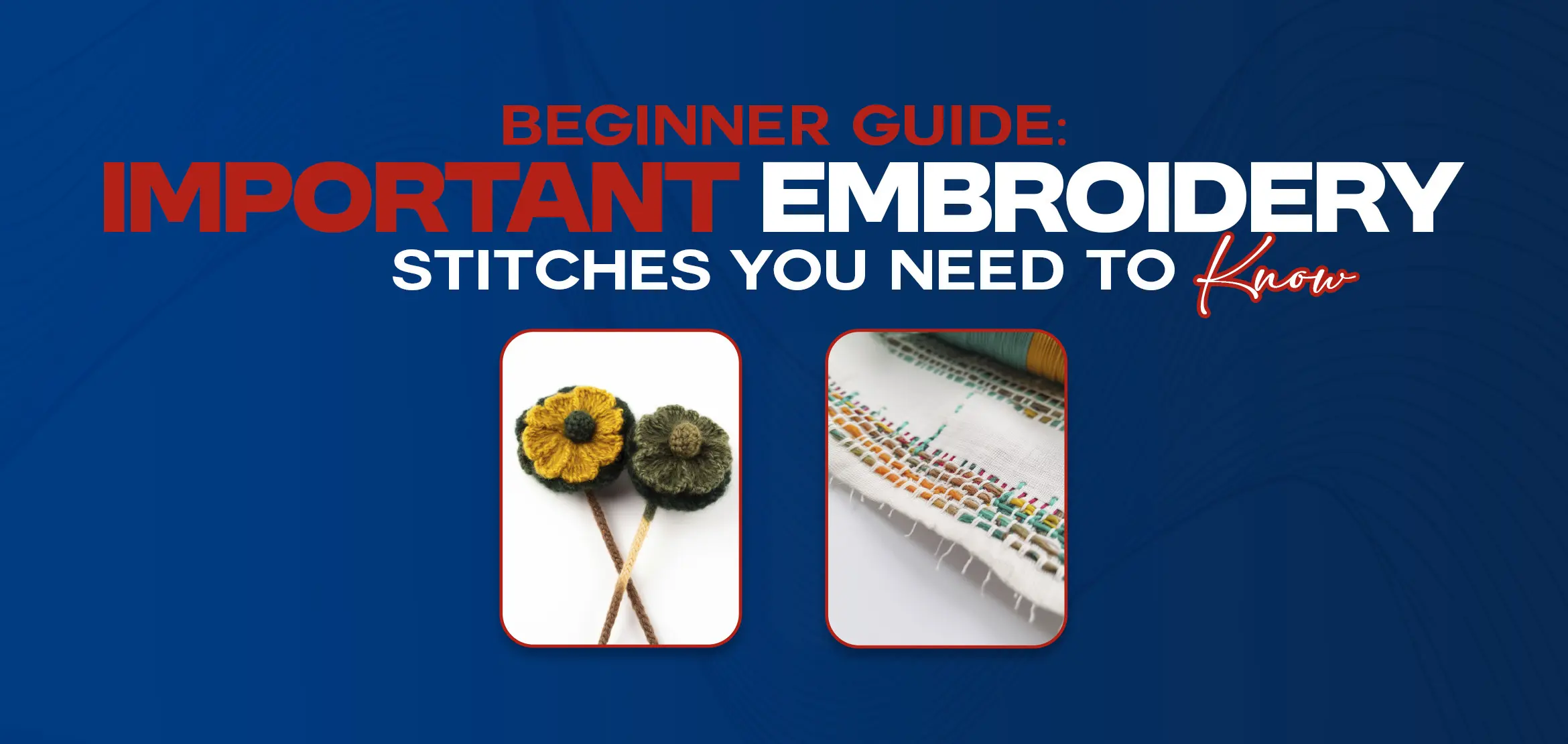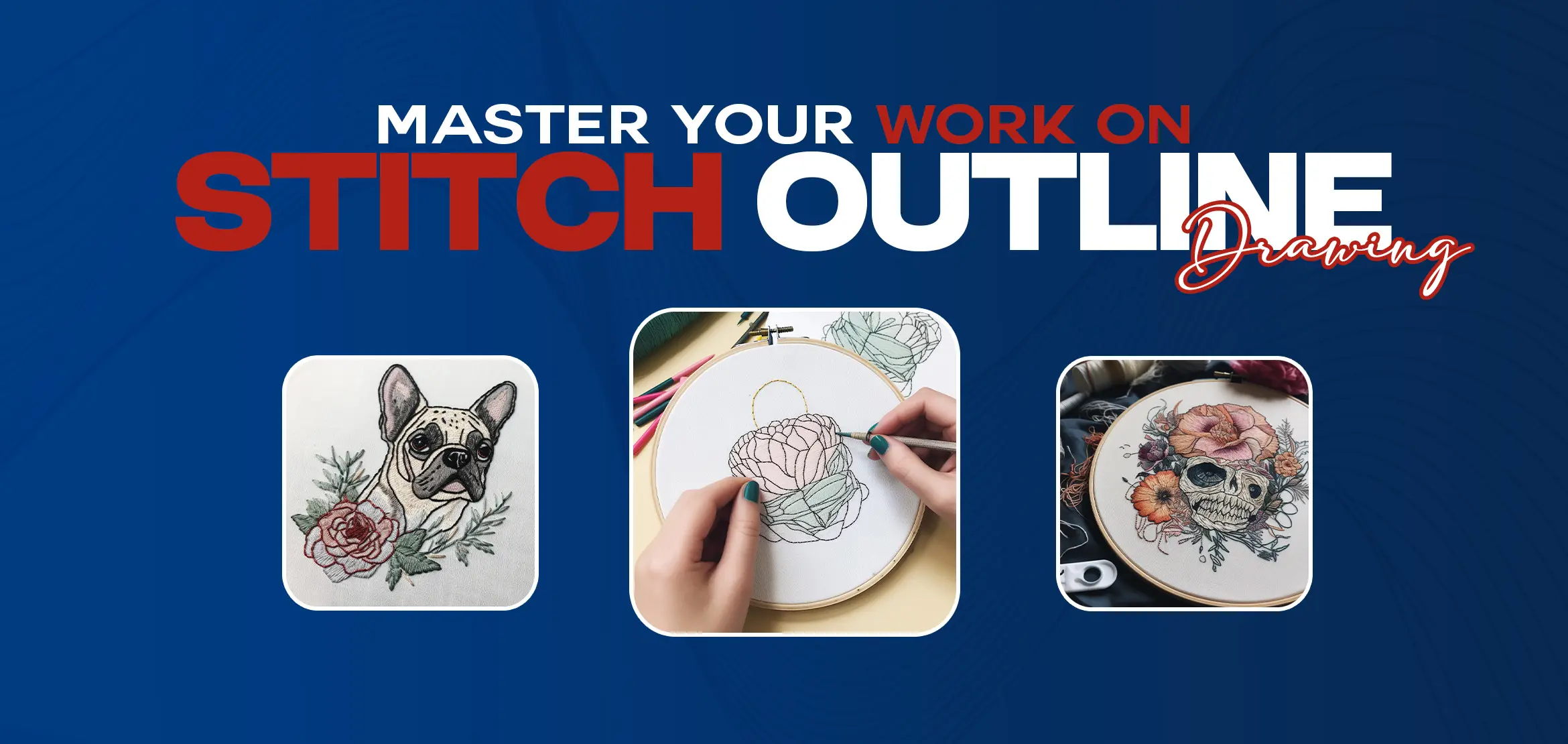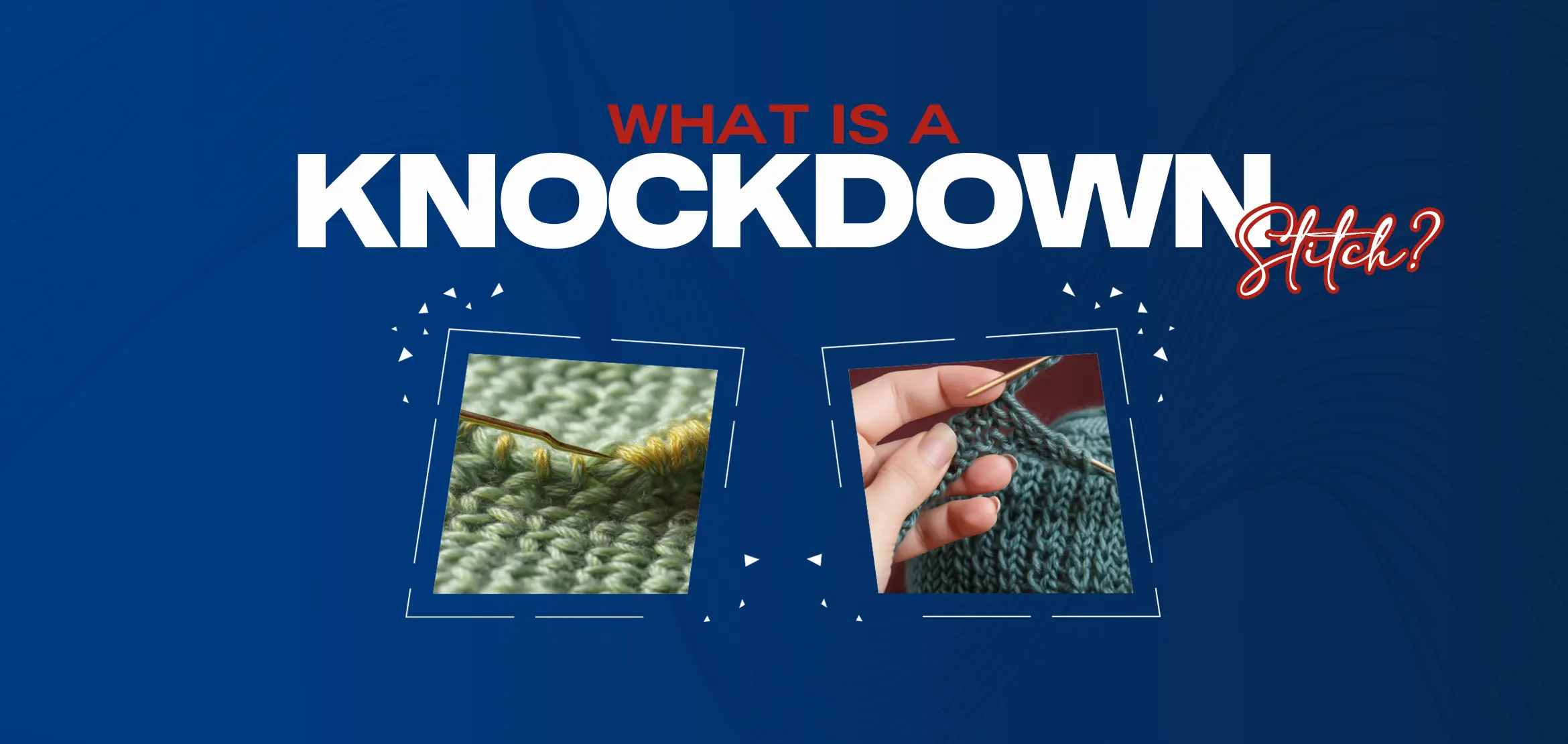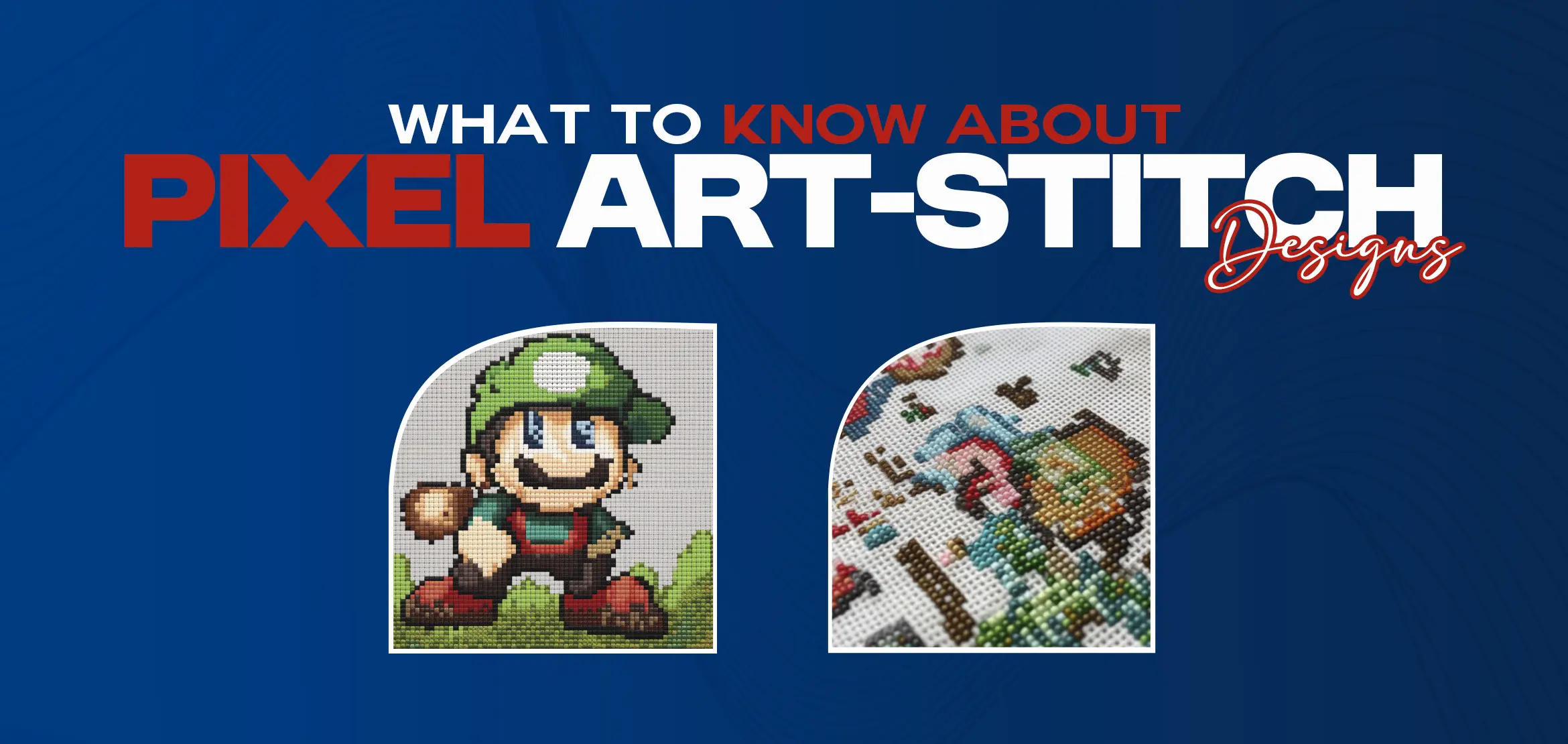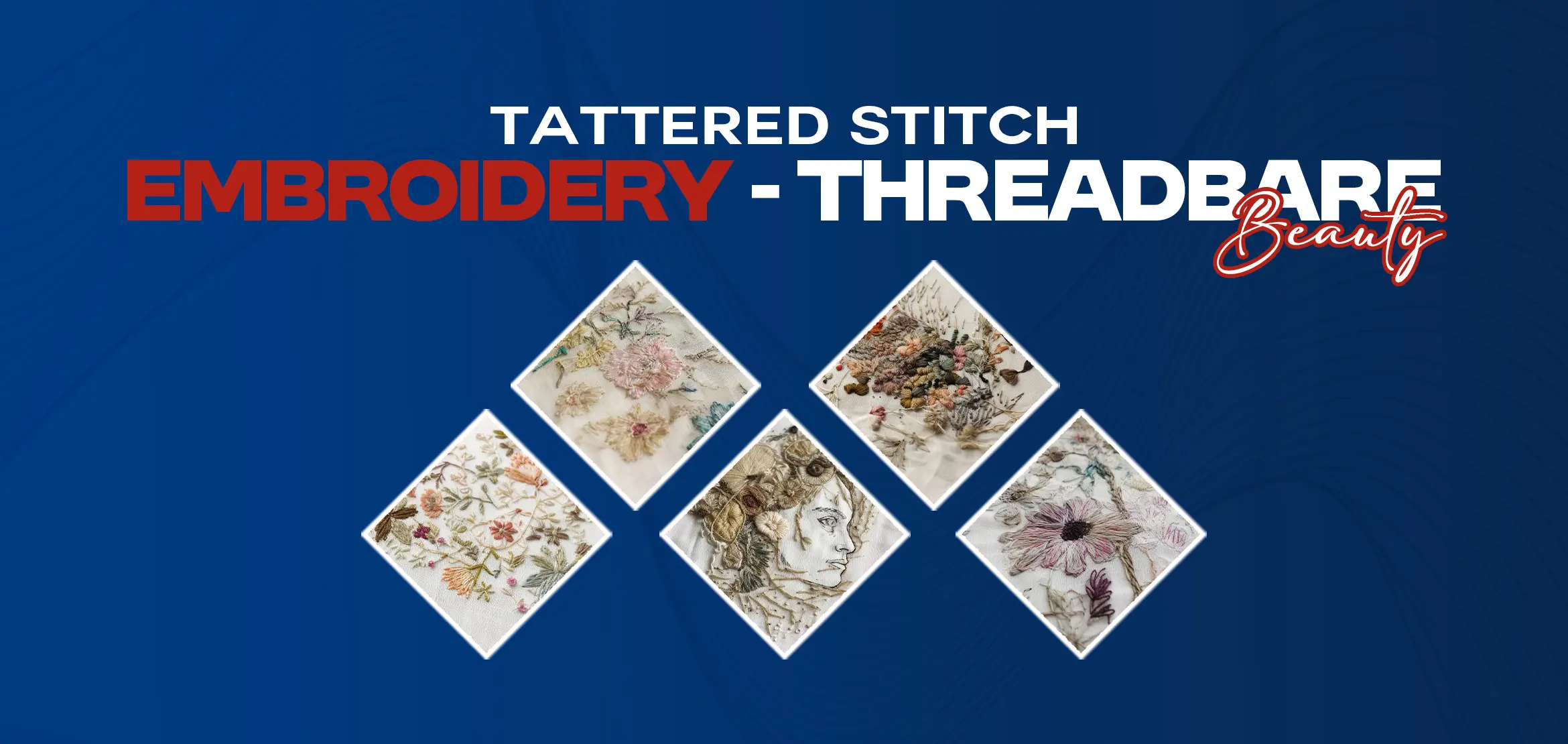
Tattered Stitch Embroidery - Threadbare Beauty
Table Of Content
- 1. Benefits of Tattered Stitch Embroidery
- 2. History of Tattered Stitch Embroidery
- 3. Origin and Development of Tattered Stitch Embroidery
- 4. Famous Textile Artists and Their Work
- 5. Basic Techniques for Creating Tattered Stitch Embroidery
- 6. Types of Embroidery Threads
- 7. Types of Running or Straight Stitches Used
- 8. Types of Fabric Used for Tattered Stitch Embroidery
- 9. How to Make Pieces of Fabric Stronger
- 9.1 Patching
- 9.2 Reinforcing
- 9.3 Backing Fabric
- 9.4 Running Stitch
- 9.5 Fusible Webbing
- 10. Tips on Distressing Fabric for Boro-inspired Projects
- 10.1 Fraying Fabric
- 10.2 Shredding Fabric
- 10.3 Aging Fabric
- 11. Modern Techniques for Creating Tattered Stitch Embroidery
- 12. Susan Briscoe and Her Promotion of the Technique
- 13. Contemporary Fabrics and New Methods
- 14. Final Thoughts
- 15. FAQs (Frequently Asked Questions)
Tattered stitch embroidery, also known as threadbare beauty, is a technique that takes advantage of the worn and frayed nature of fabric to create unique and captivating designs. This form of embroidery celebrates the imperfections and distress that naturally occur in textiles, transforming them into beautiful works of art. With a nod to traditional techniques like Japanese sashiko embroidery and boroboro, tattered stitch embroidery combines modern and authentic techniques to bring new life to old fabric scraps. Through the use of basic stitches such as the running stitch, straight stitch, and blanket stitch, textile artists and contemporary sewers can create stunning pieces using distressed fabrics. By mending visible holes and tears with decorative stitches, the fabric becomes stronger while retaining its original character. Tattered stitch embroidery is a celebration of the beauty that can be found in the imperfect and the worn, creating a truly unique and visually appealing textile art form. Tattered Stitch Embroidery offers numerous benefits for textile projects, particularly in the realm of visible mending. This technique not only adds visual interest to fabric but also introduces captivating textural elements. By utilizing different stitches and techniques, Tattered Stitch Embroidery enables individuals to repair damaged or worn pieces creatively. One of the key advantages of Tattered Stitch Embroidery is its ability to enhance fabric by providing a solution for repairing and reinforcing it. By artfully incorporating stitches into the fabric, the worn or damaged areas are not only repaired but can also become highlighted features of the design. This approach transforms flaws into unique and beautiful elements, adding character to the fabric. Furthermore, Tattered Stitch Embroidery allows for self-expression and personalization in textile projects. With a wide range of stitches available, individuals can choose to create embroidery patterns or designs that resonate with them, offering a sense of individuality to their work. This technique encourages experimentation and exploration, empowering individuals to showcase their creativity through their needlework. The concept of visible mending, which Tattered Stitch Embroidery aligns with, has gained popularity in the contemporary fiber art community. It embraces the idea of celebrating imperfections and telling the story of the fabric's journey. By incorporating Tattered Stitch Embroidery into their projects, contemporary fiber artists can not only repair and strengthen their work. But also contribute to the decorative mending movement, promoting sustainability and longevity in textile creation. The history of Tattered Stitch Embroidery can be traced back to the ancient art of embroidery, which dates back thousands of years. Throughout history, embroidery has been used for both practical and decorative purposes. With stitches being woven into fabric to create intricate designs and patterns. Over time, as fabrics became worn or damaged, people developed the technique of Tattered Stitch Embroidery as a way to repair and reinforce these textiles. This technique not only allowed for the preservation of cherished fabrics but also transformed flaws into unique and beautiful elements, adding character and history to the fabric. Tattered Stitch Embroidery has continued to evolve and adapt, with modern textile artists and designers incorporating it into their work to celebrate imperfections and promote sustainability in textile creation. Today, this technique remains a beloved and versatile art form that highlights the beauty of threadbare fabric and elevates it to new levels of creativity and artistry. Tattered stitch embroidery, also known as "boro-inspired embroidery" finds its roots in traditional Japanese textiles. Originally, boro referred to patchwork garments that were handed down through generations, repaired and repurposed using simple running stitches. Over time, these utilitarian textiles developed a unique and captivating beauty, characterized by their tattered appearance and intricate stitching. In recent years, tattered stitch embroidery has experienced a revival, gaining popularity among a modern audience of textile artists and sewing enthusiasts. This technique offers a new way to engage with the legacy of traditional Japanese textiles while exploring contemporary approaches to crafting. The main principle of tattered stitch embroidery lies in the use of threadbare and distressed fabrics, such as scraps of worn-out clothes or vintage textiles, to create texture and visual interest. The stitches employed – like the running stitch, straight stitch, and chain stitch – are intentionally simple and imperfect, emphasizing the poetic beauty of imperfection and transience. This approach to embroidery has been influenced by the Japanese concept of wabi-sabi, embracing the beauty of imperfection, impermanence, and the passage of time. Tattered stitch embroidery embodies this philosophy, transforming fabric scraps into art pieces that imbue a sense of history and authenticity. As the tattered stitch embroidery revival continues to evolve. Contemporary fabric designers and fiber artists are experimenting with modern embroidery techniques and integrating it with other forms of embroidery, such as sashiko patterns or geometric motifs. This fusion of traditional techniques and contemporary aesthetics has broadened the appeal of tattered stitch embroidery, captivating both skilled stitchers and those new to the craft. Famous textile artists have made significant contributions to the world of tattered stitch embroidery, showcasing the beauty and versatility of this technique. One notable artist is Susan Briscoe, known for her exploration of traditional Japanese embroidery techniques, particularly boro and sashiko. Briscoe has dedicated her work to preserving the authentic techniques of boro and sashiko, while also infusing them with a contemporary twist. She experiments with different fabrics, including contemporary fabrics, to bring a modern appeal to her pieces. Her instructional books and workshops have introduced countless individuals to the art of tattered stitch embroidery, making her a respected figure within the modern textile and quilting community. Another renowned artist in this field is renowned for her use of contemporary fabrics and embroidery stitches is Nancy Shroyer. Shroyer combines traditional techniques with innovative approaches, creating stunning quilts with tattered stitch embroidery elements. Her work emphasizes the versatility of tattered stitch embroidery and its ability to transform even the simplest of fabrics into unique works of art. These textile artists, among others, have played a crucial role in the revival and growth of tattered stitch embroidery. By exploring the techniques of boro and sashiko, as well as integrating contemporary fabrics and embroidery stitches, they have brought this traditional craft into the spotlight. Their work has inspired a new generation of fiber artists and quilters to experiment with tattered stitch embroidery, providing a fresh perspective on this ancient technique. Tattered stitch embroidery is an art form that celebrates the beauty of threadbare fabric and the skillful use of basic techniques. By combining traditional stitches with innovative approaches, artists can transform even the simplest of fabrics into unique works of art. Whether it's the running stitch, straight stitch, or the decorative blanket stitch, these basic techniques are the building blocks of tattered stitch embroidery. By layering fabric scraps and experimenting with different embroidery threads, textile artists can create stunning geometric patterns and distressed fabric effects. Tattered stitch embroidery is not only a nod to the Japanese boro and sashiko traditions but also a contemporary movement that allows for the expression of individual creativity. Through instructional books and workshops, proponents of this authentic technique are inspiring a new generation of fiber artists to explore the endless possibilities of tattered stitch embroidery. Whether it's the visible mending movement or the modern appeal of Japanese design, this art form is flourishing and captivating fabric lovers around the world. Tattered Stitch Embroidery offers a wide range of embroidery threads to suit the diverse needs of textile artists. These threads come in various types, each with its own unique characteristics and uses. The first type of thread is the stranded cotton floss. It is a versatile thread that is lightweight and has a smooth texture. It comes in an extensive range of vibrant colors, making it perfect for adding pops of color or creating intricate designs. The floss can be separated into different strands for creating different thicknesses and effects. Another type of thread offered is the metallic thread. This thread adds a touch of shimmer and glamor to embroidery projects. It is ideal for creating eye-catching accents or highlighting specific areas of a design. For those who prefer a more textured look, Tattered Stitch Embroidery also offers wool thread. The wool thread adds depth and warmth to designs and is perfect for creating fuzzy textures or adding dimension to embroidered pieces. Silk thread is a luxurious option that adds a touch of elegance to embroidery projects. It has a silky smooth texture and a beautiful sheen that enhances the overall design. Lastly, Tattered Stitch Embroidery offers a selection of specialty threads, including variegated threads, pearl cotton, and metallic blends. These threads add interest and a contemporary feel to embroidery projects. Whether you are a seasoned textile artist or just starting out, Tattered Stitch Embroidery has the perfect thread for your next creation. Choose from a variety of weights, textures, and colors to bring your designs to life with the rich and vibrant threads offered. In hand embroidery, running and straight stitches are the foundation of many designs. These stitches are simple, yet versatile, and can be used in various ways to create beautiful and intricate patterns. The running stitch is the most basic and common stitch used in embroidery. It consists of straight, even stitches that go in one direction or follow a specific pattern. It is perfect for outlining designs, creating delicate lines, or filling large areas quickly and evenly. The straight stitch is similar to the running stitch but is used for shorter lines or single stitches. It is often used for details, like tiny flower petals or individual lines in lettering. Straight stitches can also be worked in parallel rows for a textured effect. Another popular stitch is the blanket stitch, which is perfect for securing fabric edges and adding decorative borders. It creates a looped edge that resembles the trim on a blanket. This stitch is commonly used in appliqué projects or to sew patches onto fabrics. The chain stitch is a versatile stitch that resembles a series of loops connected in a chain. It can be worked in straight lines, curves, or even as a filling stitch. This versatile stitch is often used for outlining designs, creating vines, or adding a hand-drawn look to embroidered motifs. Lastly, the double running stitch is a variation of the running stitch that can create beautiful patterns or fill empty spaces. It involves stitching over the same line twice, resulting in a solid line that is neat on both sides. This stitch is perfect for creating geometric patterns or adding intricate detail to embroidery designs. By mastering these different running or straight stitches, embroiderers can create a wide variety of designs, textures, and effects in their projects. Whether it's the simplicity of a running stitch or the elegance of a double running stitch, each stitch adds its own unique beauty to the art of hand embroidery. Tattered Stitch Embroidery embraces the beauty of imperfection, utilizing various types of fabric to achieve its unique and textured aesthetic. Fabric scraps, threadbare fabric, and distressed fabric are commonly used to create the desired worn and weathered look. When it comes to selecting fabrics for Tattered Stitch Embroidery, natural materials are preferred. Cotton and linen are particularly popular choices, as they provide durability and strength to withstand the stitching and distressing techniques involved in this technique. Fabric scraps are small pieces of leftover material that can add interesting textures and colors to Tattered Stitch Embroidery. Threadbare fabric, with its worn and thin appearance, adds character and a vintage feel to the designs. Distressed fabric, which is intentionally frayed and aged, creates a rustic and time-worn effect. Incorporating these different types of fabric allows Tattered Stitch Embroidery to tell a story through its imperfect and visually captivating creations. By embracing the beauty of worn and textured materials, this artistic technique captures the essence of nostalgia and authenticity. When working on projects that require the use of fabric, it's important to ensure that the pieces are strong and durable. There are several techniques you can employ to make pieces of fabric stronger when using them in projects. One method is patching. If you have a small area of fabric that is weak or worn, you can patch it by cutting a piece of fabric slightly larger than the area in need of repair and stitching it onto the damaged section. This will add strength and stability to the fabric. Another technique is reinforcing with interfacing. Interfacing is a material that is used to add structure and strength to fabrics. By applying interfacing to the back of a piece of fabric, you can make it more robust and less prone to tearing or fraying. Adding a backing fabric is another great way to make pieces of fabric stronger. By attaching a layer of fabric to the back of your main fabric, you create a double layer that can withstand more wear and tear. This is especially useful for projects such as bags or cushions that will be subject to frequent use. Using stitches such as the running stitch or blanket stitch can also help to secure and strengthen fabric edges. These stitches not only add a decorative touch, but they also prevent the fabric from fraying and unraveling. Lastly, you can use fusible webbing or fabric glue to attach fabric scraps to create a layered and reinforced effect. This technique is particularly useful when working with small or delicate pieces of fabric that may not withstand conventional stitching. By utilizing these techniques, you can ensure that your pieces of fabric are strong and sturdy, allowing your projects to withstand the test of time. When it comes to creating boro-inspired projects, distressing fabric is a key technique that adds a worn and weathered look to the fabric. This technique reflects the aesthetic of tattered stitch embroidery and gives your projects an authentic, vintage appeal. Here are some tips on distressing fabric for boro-inspired projects: To create a frayed effect, start by unraveling the edges of the fabric using tools like scissors or your fingers. Gently pull out some of the threads to achieve a textured and worn look. Be careful not to overdo it, as you still want the fabric to hold together. To create a more drastic and unevenly distressed look, use scissors to cut small slits or holes in the fabric. You can also tear the fabric by hand in certain areas. This adds a rugged charm to your boro-inspired projects. Give your fabric an aged appearance by using tools like sandpaper or a pumice stone to gently rub the surface. This will create a faded and weathered effect. For a more dramatic effect, you can also experiment with bleaching the fabric or using fabric dyes to achieve an antique look. Remember to distress the fabric before starting your boro-inspired projects. This way, you can incorporate the distressed areas into your design and create a stunning piece that showcases the beauty of tattered stitch embroidery. In the world of embroidery, tattered stitch embroidery has gained popularity for its unique and unconventional charm. This technique involves deliberately distressing and fraying fabric to create a worn, rustic appearance. While traditional embroidery focuses on precision and neatness, tattered stitch embroidery embraces imperfections and celebrates the beauty of a threadbare fabric. With the rise of visible mending and the influence of textile artists like Susan Briscoe, modern sewers have been experimenting with a variety of techniques to achieve this distressed effect. From fraying and shredding fabric to aging techniques like sandpaper distressing and bleaching, there are countless ways to create tattered stitch embroidery. Even contemporary stitches like running stitch, double running stitch, and chain stitch can be adapted to suit this rugged aesthetic. Japanese embroidery techniques, such as sashiko and boro-inspired projects, have also influenced the modern appeal of tattered stitch embroidery, offering geometric patterns and decorative mending movements. With a wide range of techniques and an abundance of creative possibilities, tattered stitch embroidery allows fabric lovers to express their artistic vision and create truly unique and captivating pieces. Susan Briscoe has played a pivotal role in promoting tattered stitch embroidery to proponents of modern textiles. With a background in textile art, she brings a wealth of knowledge and expertise to the craft. Her instructional books on Japanese sashiko embroidery have become go-to resources for aspiring fiber artists. Through her writing, Briscoe has introduced contemporary stitch enthusiasts to the authentic technique of tattered stitch embroidery. She explores the use of fabric scraps and threadbare fabrics to create stunning pieces of art. Her books showcase various basic techniques and modern approaches that fuse traditional Japanese methods with contemporary fabrics, giving the craft a fresh and modern appeal. Briscoe's books also delve into the decorative mending movement, which has gained popularity in recent years. By teaching visible mending and distressing fabric to create boro-inspired projects, she has influenced a new generation of sewers and textile artists. Her collection of boro patterns and designs provide inspiration for those looking to embrace this Japanese technique. Thanks to Susan Briscoe's dedication, tattered stitch embroidery has found a place of recognition and appreciation in the world of modern textiles. Her work has made the technique accessible to fabric lovers and designers alike, encouraging them to experiment with natural fabrics and explore the possibilities offered by the beautiful yet threadbare materials. In the world of embroidery, contemporary fabrics and new methods have brought a fresh perspective to the traditional craft. Instructional books on Japanese Sashiko embroidery have emerged as a valuable resource for those seeking to explore this art form with a modern twist. These instructional books not only provide step-by-step guidance on traditional techniques but also offer new methods that incorporate a wide range of contemporary fabrics. From natural fabrics like linen and cotton to more textured options like denim and wool, these books showcase the versatility of Sashiko embroidery. One notable aspect of these instructional books is their emphasis on wabi-sabi style sewing techniques. Hand piecing, sashiko embroidery, big stitch quilting, and visible mending are just a few examples of the techniques covered. These methods embrace the beauty of imperfection and celebrate the unique character of each stitch. By combining contemporary fabrics with traditional techniques. These instructional books enable fiber artists and embroidery enthusiasts to create one-of-a-kind pieces that bridge the gap between old and new. Whether it's a linen tablecloth adorned with intricate Sashiko patterns or a denim patchwork quilt with visible mending accents, the possibilities are truly endless. In conclusion, Tattered Stitch Embroidery offers a unique and captivating approach to contemporary textile art. This slow stitching technique, inspired by traditional Japanese textiles and the boro movement, combines the use of contemporary fabrics with sustainable sewing techniques. By incorporating fabric scraps and threadbare materials, Tattered Stitch Embroidery not only celebrates the beauty of imperfection but also promotes the concept of visible mending and the reduction of fabric waste. Through instructional books and resources, Tattered Stitch Embroidery provides artists and enthusiasts with a plethora of ideas and techniques to explore. From boro-inspired projects to the incorporation of modern stitches, these resources spark creativity and encourage the creation of one-of-a-kind pieces that showcase the unique character of each stitch. In a world of mass-produced textiles, Tattered Stitch Embroidery stands out as a testament to the beauty of handcrafted and authentic techniques. It not only pays homage to the rich tradition of Japanese textile art but also pushes the boundaries of contemporary embroidery. With its emphasis on individuality, creativity, and sustainability, Tattered Stitch Embroidery continues to inspire and captivate fiber artists and fabric lovers alike. Q1. What are the benefits of Tattered Stitch Embroidery for textile projects? Tattered Stitch Embroidery offers benefits such as creative repair, enhanced fabric aesthetics, personalization, and contribution to the visible mending movement. Q2. How does Tattered Stitch Embroidery celebrate imperfections in fabric? Tattered Stitch Embroidery repairs and highlights imperfections by using decorative stitches, turning flaws into beautiful design elements. Q3. What is the history of Tattered Stitch Embroidery, and how does it connect to ancient embroidery techniques? Tattered Stitch Embroidery has its roots in the ancient art of embroidery, evolving over time as a way to repair and celebrate the character of worn fabrics. Q4. Who are some famous textile artists associated with Tattered Stitch Embroidery? Artists like Susan Briscoe and Nancy Shroyer have made significant contributions by preserving traditional techniques and infusing them with contemporary creativity. Q5. What types of embroidery threads are commonly used in Tattered Stitch Embroidery? Tattered Stitch Embroidery uses a variety of threads, including stranded cotton floss, metallic thread, wool thread, silk thread, and specialty threads, to add texture and character to the designs.1. Benefits of Tattered Stitch Embroidery
2. History of Tattered Stitch Embroidery
3. Origin and Development of Tattered Stitch Embroidery
4. Famous Textile Artists and Their Work
5. Basic Techniques for Creating Tattered Stitch Embroidery
6. Types of Embroidery Threads
7. Types of Running or Straight Stitches Used
8. Types of Fabric Used for Tattered Stitch Embroidery
9. How to Make Pieces of Fabric Stronger
9.1 Patching
9.2 Reinforcing
9.3 Backing Fabric
9.4 Running Stitch
9.5 Fusible Webbing
10. Tips on Distressing Fabric for Boro-inspired Projects
10.1 Fraying Fabric
10.2 Shredding Fabric
10.3 Aging Fabric
11. Modern Techniques for Creating Tattered Stitch Embroidery
12. Susan Briscoe and Her Promotion of the Technique
13. Contemporary Fabrics and New Methods
14. Final Thoughts
15. FAQs (Frequently Asked Questions)
